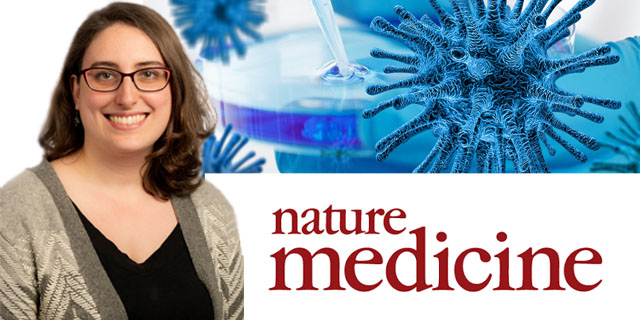Funding boost for COVID-19 researchers
Leading researchers in the School of Biomedical Sciences and Doherty Institute to benefit from the Vic Government’s latest COVID-19 Research Fund injection.
Cutting-edge medical research projects and collaborations focused on better understanding, preventing and treating coronavirus will be supported in the recent funding announcement.
Seven projects are to benefit from the $5.5 million research funding allocation, with three of those involving key researchers from the Department of Microbiology and Immunology and the Peter Doherty Institute for Infection and Immunity (Doherty Institute).
Dr Jennifer Juno (Dept of Microbiology) is involved in a study to define immunity to COVID-19 at the individual level and generate knowledge to enable the development of better vaccines and biotherapies for the whole community. This project is led by researchers at the Kent Laboratory, Doherty Institute and Department of Microbiology, and builds upon the team’s recent research, published in Nature Medicine, that detailed the mechanisms providing protective immunity to SARS-CoV-2. Read more here.

Professor Kanta Subbarao (Dept of Microbiology and Director of the WHO Collaborating Centre for Reference and Research in Influenza at the Doherty Institute), Professor Jason Mackenzie (Dept Microbiology) and Professor Sharon Lewin (Director, Doherty Institute) are part of the Murdoch Children’s Research Institute’s (MCRI) project which will evaluate the direct and indirect effects of SARS-Cov-2 virus (COVID-19), on multiple organ systems using stem cell-derived human tissues. Their aim is in to understand the disease pathology to change clinical care and facilitate the development of targeted treatment options.
The third project is led by the Burnet Institute in collaboration with Professors Dale Godfrey, Damian Purcell and Deborah Williamson all of the Department of Microbiology and Doherty Institute. It focuses on improving our understanding of COVID-19 immunity by providing a highly scalable tool for the measurement of neutralising antibody at both the individual patient level, and for screening of populations at scale.
Congratulations to all those involved.
This article was originally published by the Doherty Institute, 3 August 2020.